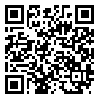BibTeX | RIS | EndNote | Medlars | ProCite | Reference Manager | RefWorks
Send citation to:
URL: http://umj.umsu.ac.ir/article-1-2550-en.html
Background & Aims: Spleen is one of the most common sites of injury after trauma. When splenectomy due to spleen damage is unavoidable, autotransplantation of splenic tissue is the only possible option to preserve splenic function. Immunologic function of spleen against infections is unremarkable but compensation levels of immunological activity and structural rearrangement of transplanted spleen according to implanted spleen size is still in doubt. The purpose of this study was to evaluate cellular and serological changes in after autotransplantation of spleen tissue on omentum of rats compared to splenectomized rats.
Materials & Methods: In this randomized controlled experimental trial, 80 male Wistar rats were randomly divided into 4 groups.Sp Group underwent splenectomy, Au group underwent splenectomy, and autotransplantation of three pieces of spleen tissue comprising 15-10 % of its volume in the great omentum, and Sh group underwent laparotomy with peritoneal irritation. Co Group was followed as the control group. 10 cases in each group were randomly assigned into 6 months or 12 months follow up groups. At the end of the follow-up period, blood samples were obtained and leukocyte, lymphocyte and platelet counts and immunoglobulin M antibody levels were measured and compared between study groups. Besides re-laparotomy were done in both follow up groups of spleen autotransplanted rats and compared in terms of macroscopic and microscopic characteristics.
Results: The results of our study showed that after 6 and 12 months of follow up, leukocyte and lymphocyte count was not statistically different between the study groups. Platelet count in the Sp group at the end of 6 and 12 months was greater than the control group (0.001> P). The difference in platelet count between the two Sp and Au groups was not significant. Serum IgM levels in the Sp group after 6 and 12 month, were significantly lower than Co and Sh groups but the difference between Au group with Co and Sh groups wasn’t statistically significant. Mean IgM levels in Au group was higher than Sp group, but the difference was not statistically significant (0.14 = P). In looking for autotarnsplanted splenic tissue, implanted spleen was detected in all cases except one case (6.25%). The number of rearranged red pulp and white pulp and formation of lymphoid follicles in inplanted spleen was higher in 12-month follow-up. Hemosiderin pigment levels also were significantly higher in the 12-month follow-up.
Conclusions: Autotransplantation of about 15% of splenic tissue volume were successful in majority of cases and spleen tissue rearrangement and its benefits on the immune system was indispensable. So autotransplantation of spleen, even at low volumes, in the case of unavoidable splenectomy is strongly recommended.
SOURCE: URMIA MED J 2014: 25(10): 954 ISSN: 1027-3727
| Rights and permissions | |
 |
This work is licensed under a Creative Commons Attribution-NonCommercial 4.0 International License. |





